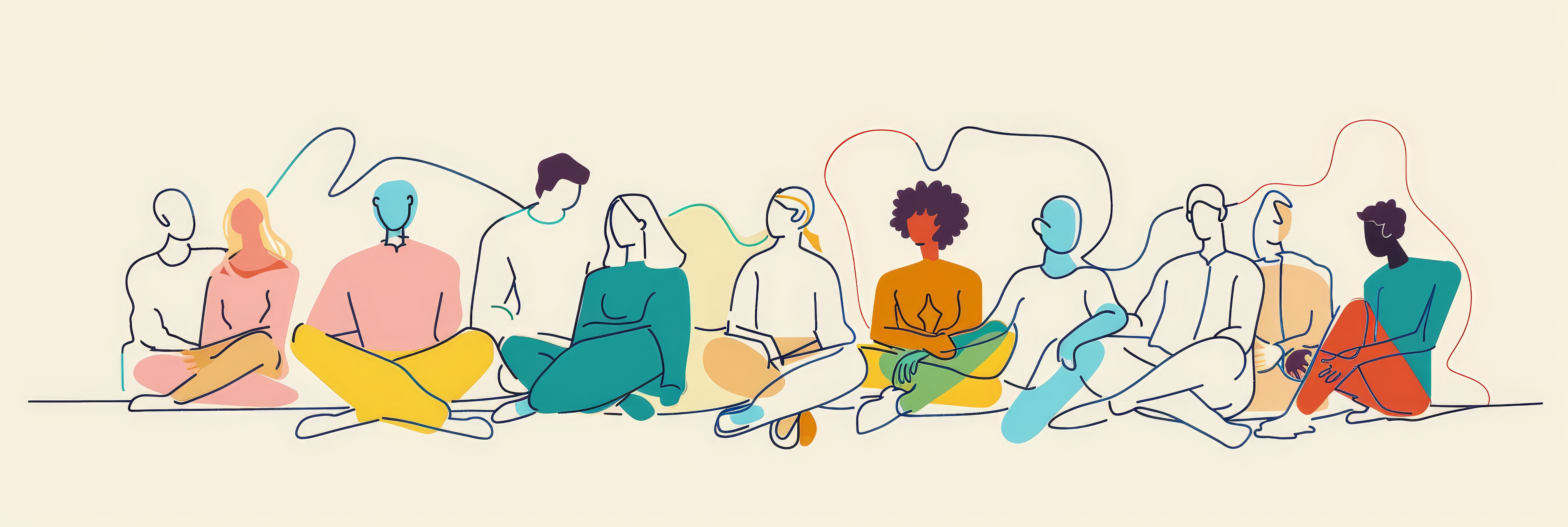By: Ashley Hemrich, M.A., Regional Director of Clinical Partnerships
While in eating disorder recovery, we often hear the phrase(s), “being mindful,” “staying present,” or even “mindfully eating.” If you are anything like me, you may ask yourself, “what does being mindful mean and how can I do it?” For many of us who are familiar with mindfulness-based practices, we may also find ourselves confused with utilizing the basic concepts. For example, “Do I completely empty my thoughts?” “Does it matter where I choose to pursue focus?” “What if I can’t focus on one thing?” “Am I doing this correctly?” The list goes on and on. I am here to tell you that all those questions are completely valid and appropriate responses when applying these principles.
What is “Mindfulness?”
The concept of “Mindfulness” is a mind-body medicine practice, based on ancient Zen Buddhist meditation principles and made popular by Jon Kabat-Zinn, researcher at the University of Massachusetts Medical School. According to Kabat-Zinn, mindfulness-based practices are innate traits within us, more specifically, living in the present moment as it is; focusing on the here and now, whether our experiences are positive or negative. Sure, that sounds easy enough, right? Truth be told, being mindful and staying in the present moment, is hard work. With the influx of stimuli coming from all directions at all different hours of the day and night, it is quite difficult for us as humans to focus on one task. Also, as you can see, I mentioned both “positive and negative experiences”, which let’s face it, we would rather pursue focus on the former, rather than the latter. Kabat-Zinn introduced mindfulness to transform our relationships with everyday life stressors, as well as significant life events. Mindfulness is a way to help us embrace the present moment in time and appreciate what it has to offer, rather than trying to escape from it.
According to Jessica Ward, Director of Therapeutic Services at Selah House, “Mindfulness is a practice. It isn’t something we can “perfect.” It is about trying to remember to tune in to the present moment and what we are experiencing right now. The feel of the keys as I type; the temperature of the room; my body sensations.”
Research has shown that mindfulness-based interventions have significantly reduced symptoms of chronic pain, major depression, anxiety, substance abuse, eating disorders, and other physical and psychological conditions. Evidence has also been shown that mindfulness-based interventions can change the brain’s gray matter, and our reaction rates to emotional stimuli, which in return, promotes greater emotional equilibrium.
Nine Basic Principles of Mindfulness
- Focus on the Present Moment: This principle is key to embracing mindfulness. Live in the present moment. When we think about the past or grow anxious about the future, we tend to equate a significant amount of unneeded stress on our bodies. Let me ask you this: “What are you doing at this very moment?” Think about it. I don’t want you to think about where you were 10 minutes ago or what you think you should be doing right now, but what are you doing at this very moment?
- Being Fully Present: Now, is what you are doing comfortable? This is the tricky part because it very well could be uncomfortable, but let’s just notice the discomfort and not try to replace it, but just notice it. “What do you feel in your body? What are you seeing, hearing, or doing at this very moment?”
- Embracing Openness to Experience: We talked about “noticing the discomfort and not trying to replace it.” This is where our openness to experience comes into play. Rather than trying to replace our current feelings or experiences, we can curiously welcome any thoughts or feelings that naturally arise. Think of it as a leaf floating down a river. The leaf is our thoughts, in which we acknowledge their presence, but do not dwell on them as they pass along down the river.
- Taking a Non-judgmental Stance: Categorizing our thoughts and feelings as “positive” or “negative” and trying to act on them or problem-solve can be an innate internal response. However, when we acknowledge that all thoughts and feelings have a purpose, whether that be to protect us from harm or to teach us a lesson, we can learn to accept what arises in our consciousness with an open mind. This practice can also help us extend a non-judgmental attitude to people around us, as well.
- Acceptance of Things as They Are: Whether it be a pleasant or not-so-pleasant experience, mindfulness helps us to accept our current reality. In this principle, we can see our reality, letting it be as is, positive or negative, and knowing that we can tolerate experiences as they happen. Often, this can extend to an acceptance of those around us, knowing that each person is the best decision-makers for their own lives.
- Feelings of Connection and Purpose: Mindfulness helps us to become connected to a larger whole; something bigger than us. We as humans tend to gravitate toward security and connection. When we feel as though our life situations are like others, we tend to reflect on experiences from a broader picture and extend gratitude for their purpose.
- Non-Attachment: As mentioned previously, in the practice of mindfulness, we do not dwell on experiences or hold onto things, but rather understand that life is a constant flow of thoughts, people, and experiences. When we become attached to a thought, idea or person, we tend to embark on fear of loss, which can be the basis of suffering. Again, when we learn to “ride the wave” or “move with the flow,” as the leaf in the river, we can become more adaptable to our surroundings.
- Peace & Tranquility: When moving through life’s highs and lows, we can maintain a sense of peace and tranquility. This does not have to mean that we move through life with “rose-colored glasses,” but rather we understand that hardships occur, and we choose to not get swept up in their negativity. With this, we can become rooted in adopting a clear vision of what these hardships hold for us and embrace the bigger picture.
- Compassion: We are gentle, kind, and patient with ourselves and others. We allow ourselves to feel pain and empathize with others when they are in pain, as well. Instead of mercilessly judging and criticizing ourselves or others for shortcomings, we can be kind and understand that imperfections are catalysts for individuality, growth, and development.
The Relationship Between Mindfulness and Eating Disorders
When in the depths of an eating disorder, we are often bombarded by thoughts surrounding weight gain, caloric intake, exercise, our next meal or lack thereof, our last binge, our next binge, self-criticism, and the list goes on and on. Our minds are not in tune with what we are doing in the present moment. However, becoming mindful can save us from the self-critical voices which continue to help fuel the eating disorder. We often find that those negative voices can act as an escape from the outside world. Many times, we hear the terms “ED Head” or something of the like, in which those suffering from eating disorders cannot see, hear, or do anything, in any given moment, but to become caught up in the eating disorder. Those critical voices make us question our self-image, compassion for ourselves, and decrease our self-esteem. Let’s face it, when you are continuously degrading and belittling yourself, are you in a happy place or a place of motivation for recovery? This self-criticism can feel never ending; almost as though you are listening to a record repeatedly. Mindfulness can help us to become aware of the social and environmental stressors that have caused us to feel shame and guilt. Now, I am not saying that we completely forget the negative events that have occurred and turn those stressors into positive things, but rather, acknowledging that these things have happened to us and move forward in a productive and meaningful manner.
Mindfulness-based practices have been shown to be extremely helpful in navigating the driving forces behind eating disorder thoughts and behaviors. Research shows that those practicing mindfulness “demonstrated significant reductions in weight concerns, dietary restraints, thin idealization, eating disorder symptomology, and other psychological concerns associated with eating disorders.”
Any day or time is beneficial for practicing mindfulness, especially as we embark on the holiday season. I ask that you take a moment each day to pause and notice: what do you hear, see, feel, taste, or smell? Perhaps by focusing on the present moment, rather than the presents in which we tend to stress over this season, we may find ourselves enjoying a little bit more of what this holiday season has to offer for us.
If you or a loved one is struggling with an eating disorder, Selah House can help. We treat women and adolescents (12+) who are struggling with eating disorders such as anorexia and bulimia. Our intimate, faith-based Christian eating disorder treatment center, uses evidence-based therapies to treat the whole person. Call our admissions team today at 765.819.2524 or complete our contact form for more information.
______________________________
“Let the words of my mouth and the meditation of my heart be acceptable in your sight, O Lord, my rock and my redeemer.” – Psalm 19:14

 Call
Call

